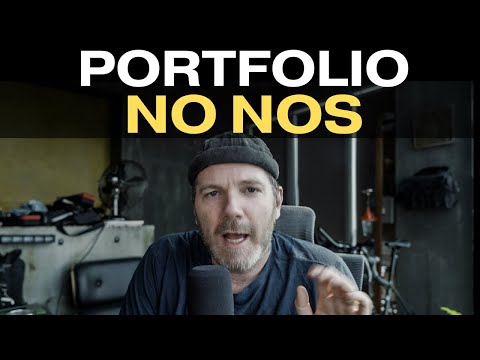These common portfolio mistakes make you look amateur
Aug 14, 2024
Share:
The photography portfolio is often a source of stress for new photographers (and some older ones, too!). What should go in it? Do I have enough decent images? How should I organise things? Should it be printed in a book?
Well, like anything, there are multiple ways to go about building and showing a strong portfolio. However, there are also a lot of common mistakes that people make. In this video, Justin Mott talks us through his opinion on what you should avoid when creating your photography portfolio.
Curation is what separates the pros from the amateurs
One of the biggest differences between professional and amateur photographers is the ability to curate effectively. Curating your portfolio is about knowing what to keep and, more importantly, what to cut. A polished portfolio doesn’t just display your best work; it tells a story, showcasing images that are refined, thoughtful, and intentional.
Here are the main portfolio mistakes to avoid. How many are you guilty of?
The clichéd travel shot
A classic mistake in many amateur portfolios is the snapshot of a group of kids staring at the camera. While this may be cute, it’s often a telltale sign of inexperience. Instead of including such shots, focus on capturing natural, candid moments that tell a story. Hang around after taking the initial photo, and capture the children in their natural environment, engaging in activities without posing.
The awkward vendor photo
The shot of an elderly vendor holding up their wares is another overdone and uninspired image often found in amateur portfolios. To elevate this, capture the scene naturally. Engage with the person, get their permission, and take the time to compose a thoughtful portrait. Focus on lighting, expression, and composition to create a more compelling image.
The random building shot
Including photos of random buildings in foreign countries without any context or story is a common mistake. A building shot should evoke emotion or tell a story. Try adding a human element or playing with light and perspective to make the image more engaging.
Interesting subject, uninteresting photo
It’s frustrating to see a great subject in a dull photo. Even if the subject is fascinating, the image itself needs to be compelling to earn a place in your portfolio. Focus on composition, lighting, and the unique aspects of the subject to elevate your shot from ordinary to extraordinary.
Images that aren’t sharp
This one should be obvious: if your image isn’t sharp where it needs to be, it doesn’t belong in your portfolio. Pros pay attention to every detail, and a soft focus can ruin an otherwise great photo. Learn your autofocus system, or if you shoot manually, take extra shots to ensure you’ve nailed the focus.
Overexposed images
Overblown highlights can detract from your work, no matter how great the composition is. Learn to expose properly, and when in doubt, underexpose slightly to save details in the highlights. Remember, the eye is naturally drawn to the brightest part of an image, so make sure it’s something worth looking at.
Redundancy
Less is more in a professional portfolio. Avoid including multiple versions of the same shot. Each image should contribute something unique to your portfolio. If you have several similar photos, pick the best one and cut the rest.
Relying on text
Show, don’t tell is very applicable to photography. If the text in your photo is doing the heavy lifting, consider whether the image is strong enough to stand on its own. A picture should be worth a thousand words, not rely on them.
Final thoughts
Creating a professional portfolio is about more than just showcasing your best work; it’s about presenting images that are refined, thoughtful, and intentional. Get a second set of eyes to review your portfolio, as it’s often hard to be objective about your own work. Whether you’re just starting out or looking to level up, refining your portfolio is a crucial step in your photography journey.
It’s also a step that you are continually having to repeat and refine, as you develop as a photographer you will want to change out images and update your portfolio. Think of it as an ongoing project rather than something monumental that you do once. That’s also the beautiful thing about it: you can always change it again later. We no longer live in the days of printing out a huge, expensive portfolio and only updating it every few years. With digital publications at our fingertips and easy, cheap printing, we can update our portfolios often.
Finally, if you’re serious about improving your craft, consider one-on-one photography classes or mentorship programs. And remember, whether you’re curating for fun or preparing for a professional review, these tips can help elevate your portfolio to the next level.
Alex Baker
Alex Baker is a portrait and lifestyle driven photographer based in Valencia, Spain. She works on a range of projects from commercial to fine art and has had work featured in publications such as The Daily Mail, Conde Nast Traveller and El Mundo, and has exhibited work across Europe





Join the Discussion
DIYP Comment Policy
Be nice, be on-topic, no personal information or flames.